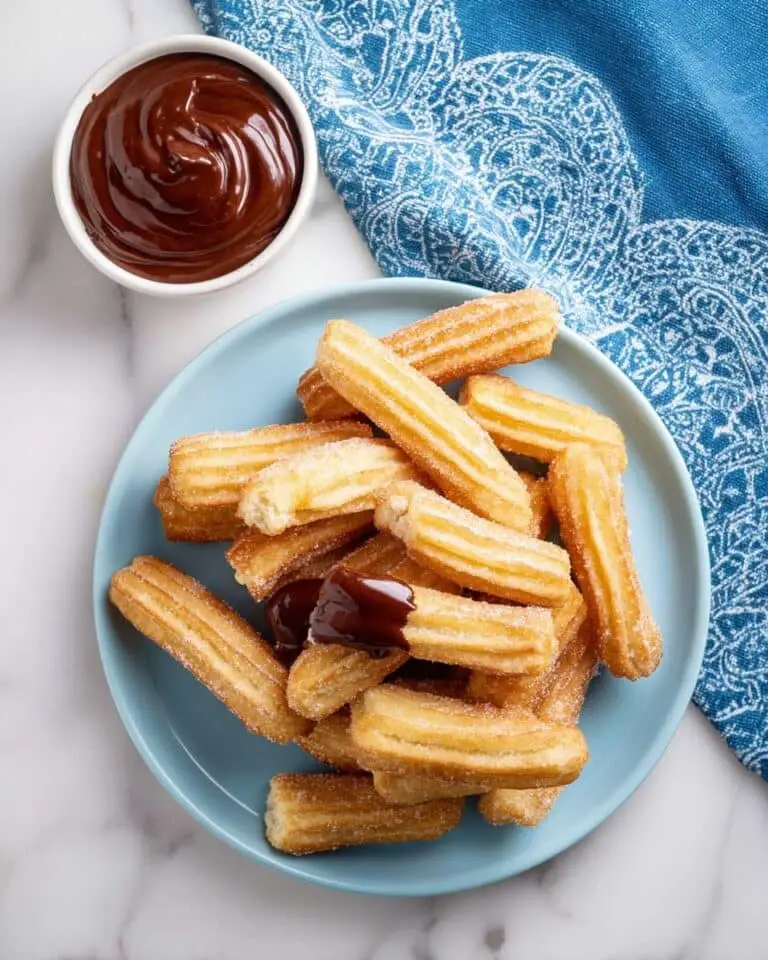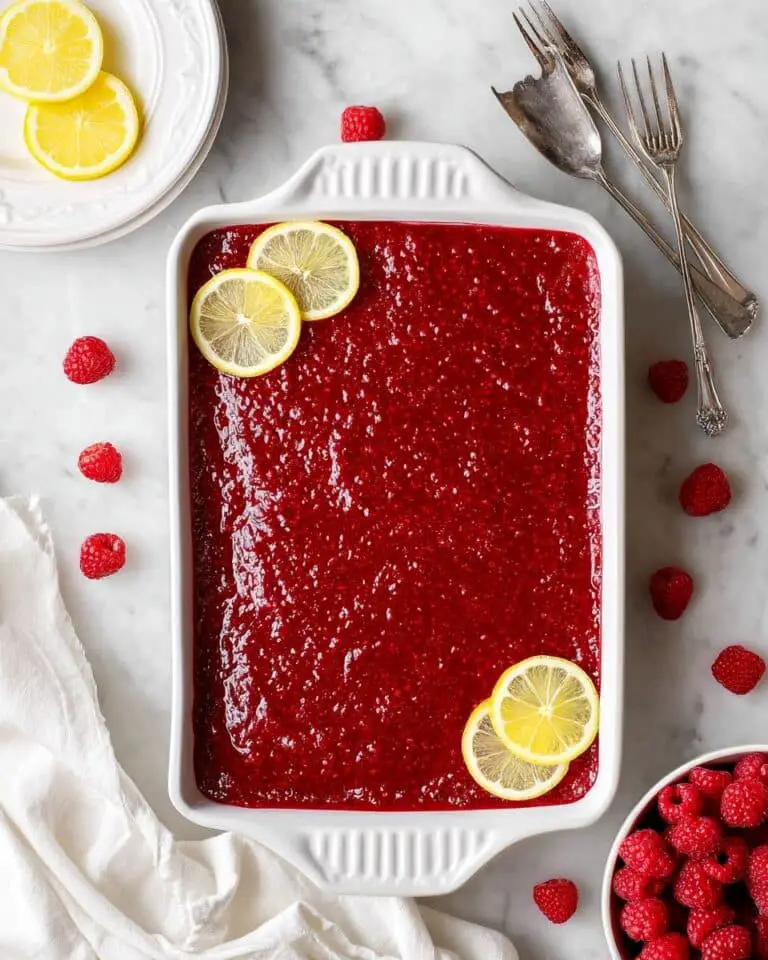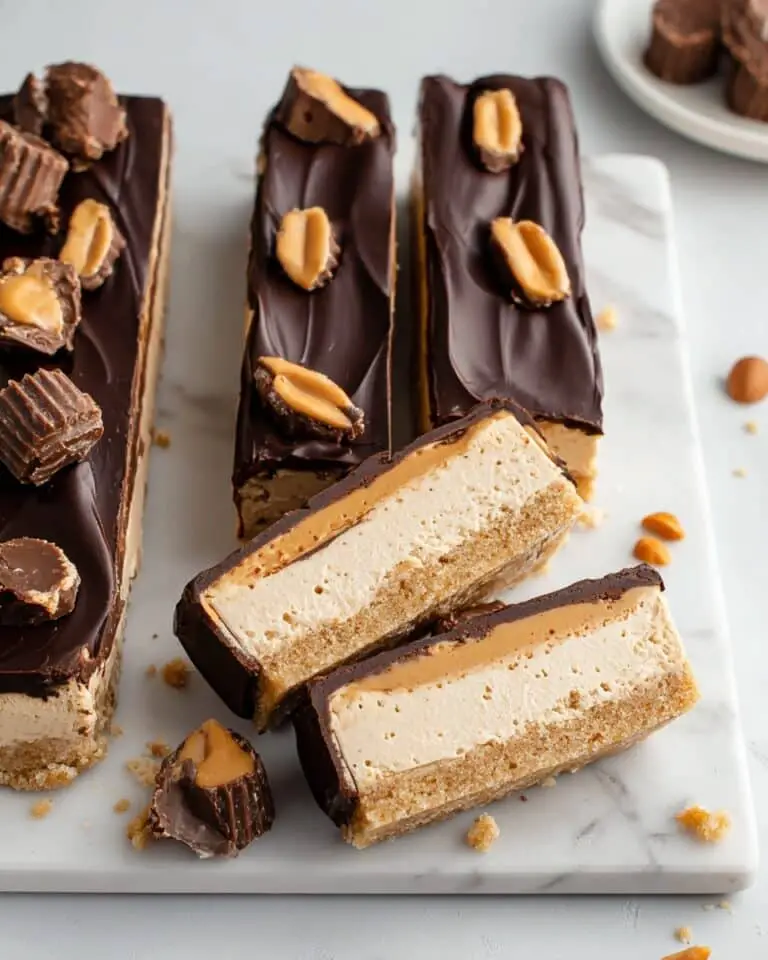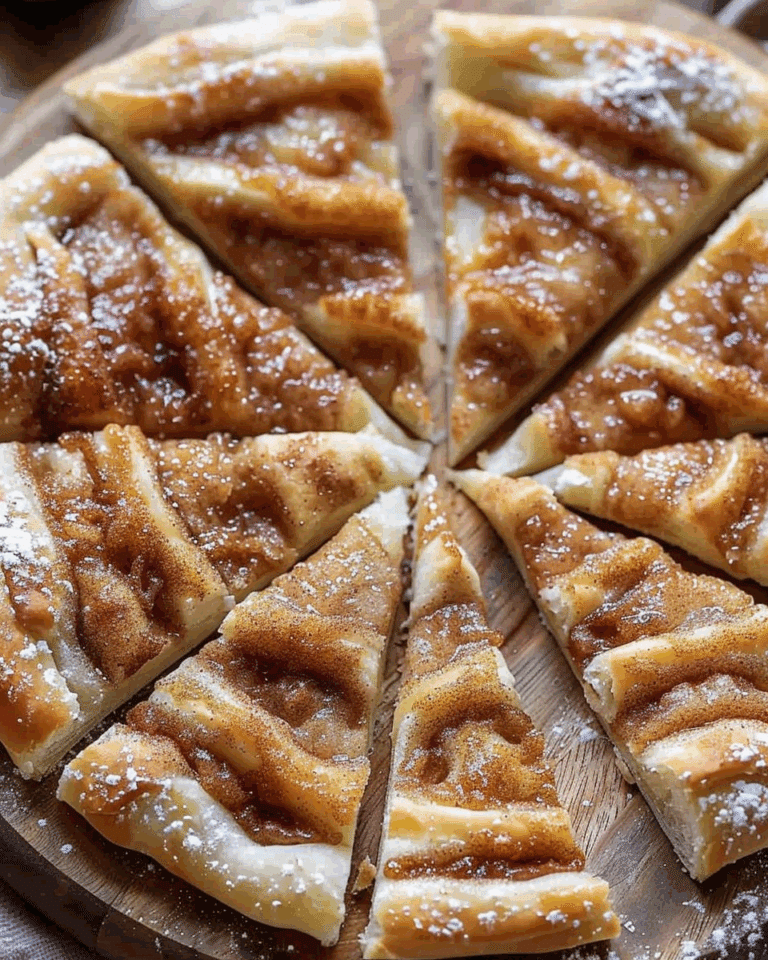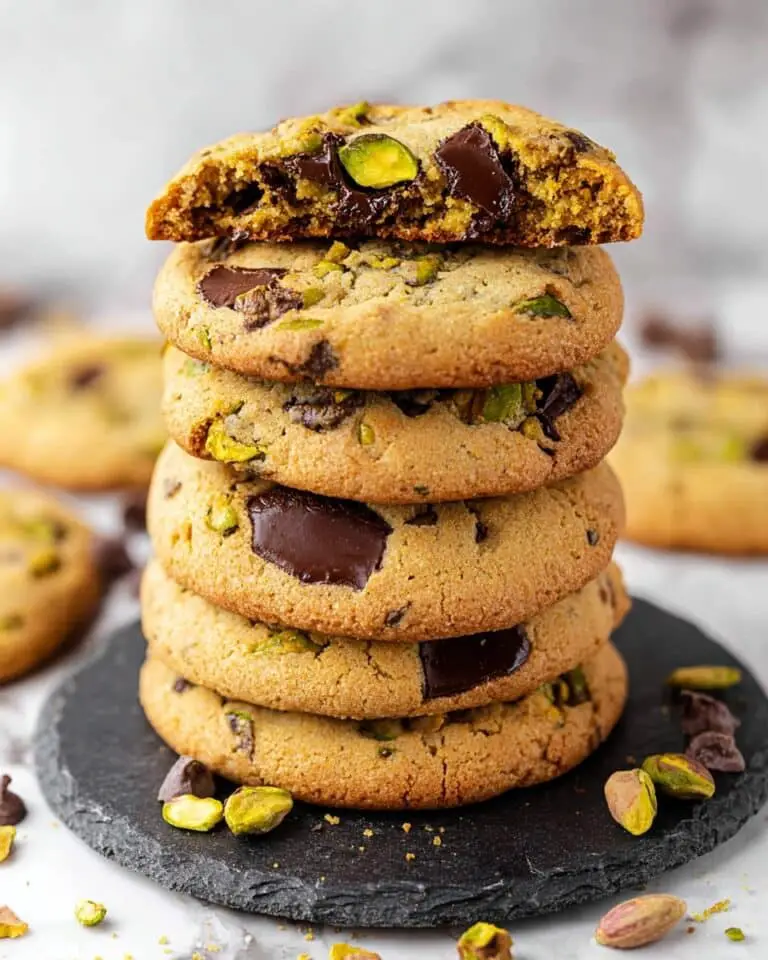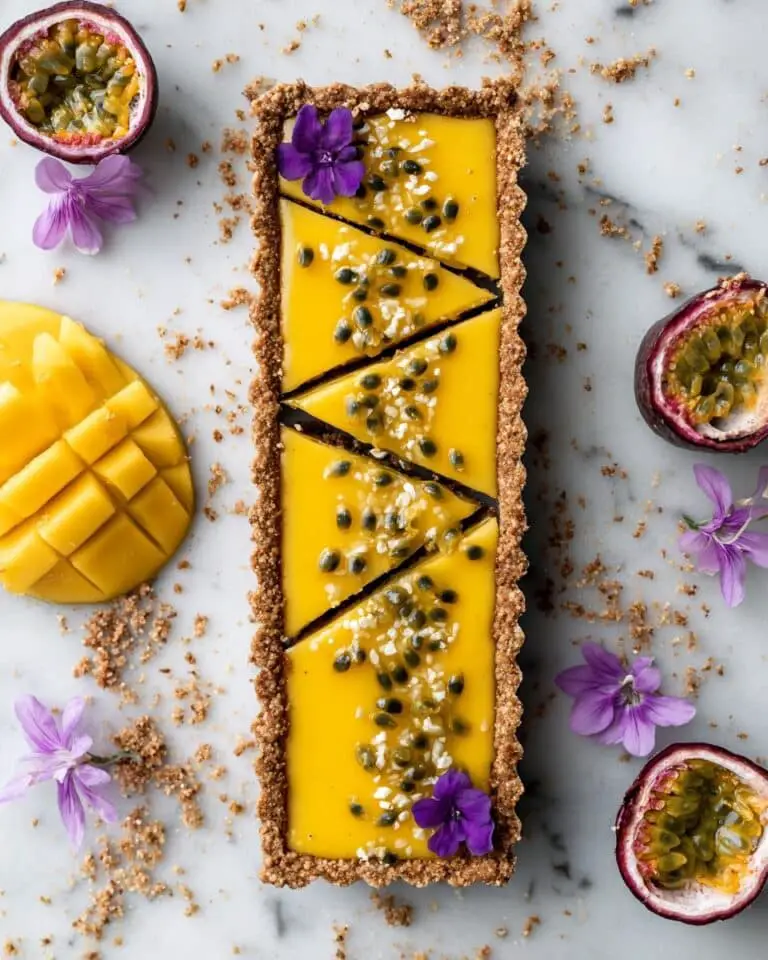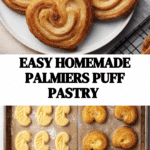If you have a sweet tooth and love a delightful crunch that melts in your mouth, the Homemade Palmiers Recipe is an absolute must-try! These irresistible, crisp, and buttery French pastries capture hearts with their elegant palm-leaf shape and caramelized sugar flavor. Crafted from just puff pastry and sugar, they’re deceptively simple yet incredibly satisfying. Whether you want an afternoon treat or an impressive addition to your dessert table, these palmiers tick all the boxes with their perfect balance of sweetness and flakiness.
Ingredients You’ll Need

With only a few staple ingredients, this recipe proves that wonderful things happen when simple components come together. Each ingredient plays a crucial role in the taste, texture, and golden color that make palmiers so special.
- Puff pastry: The foundation for flaky, buttery layers that create the classic texture.
- Granulated sugar (150 g): Provides that irresistible caramelized crunch and sweetness.
- Egg (for egg wash): Adds shine and helps the sugar stick beautifully to the pastries.
- Milk (a splash for egg wash): Lightens the egg wash so it brushes on smoothly and evenly.
How to Make Homemade Palmiers Recipe
Step 1: Prepare the Puff Pastry
Start by thawing your puff pastry sheets if they’re frozen, but keep them cool — cold pastry is key for that flaky texture. Line two baking sheets with parchment paper; there’s no need to grease them since the puff pastry is already buttery enough to prevent sticking.
Step 2: Roll and Sugar the Pastry
Unfold a sheet onto a lightly floured surface and gently roll it out just to seal folds without stretching it. Then sprinkle about three-quarters of the sugar evenly on top. This initial sugar layer ensures every bite has that perfect caramelized crunch.
Step 3: Fold the Pastry Into Shape
Fold the top and bottom halves of the pastry into the center, leaving a small gap in the middle—around 1 inch. Repeat this folding once more to create multiple layers holding the sugar. This gives the pastry its signature palm leaf shape and lets the sugar melt into the layers as it bakes.
Step 4: Slice and Chill
Sprinkle the remaining sugar on the folded log, then carefully cut it into 1 cm thick slices with a sharp knife. Place the pieces onto your prepared sheets, spaced apart to allow for puffing. If the dough feels too soft at any moment, pop it into the freezer for a few minutes — cold temperatures keep the layers intact and easier to handle.
Step 5: Egg Wash and Final Touches
Whisk together one egg with a splash of milk to create your egg wash. Brush this lightly over the pastries and dust with extra sugar if you like an even crunchier finish. This step adds a gorgeous golden gloss and enhances caramelization.
Step 6: Bake to Perfection
Preheat your oven to 200°C (392°F) without the fan. Chill the trays of pastries before baking to help them hold their shape. Bake in batches: place one tray in the oven for about 15 minutes, then flip them to bake another 10 minutes on the other side. Look for an evenly golden top with a crisp bottom before removing them to cool.
Step 7: Cool and Enjoy
Allow the palmiers to cool slightly on the tray before transferring them to a rack. This resting time helps the sugar set and the layers firm up so you can enjoy them at their crispest and most flavorful.
How to Serve Homemade Palmiers Recipe
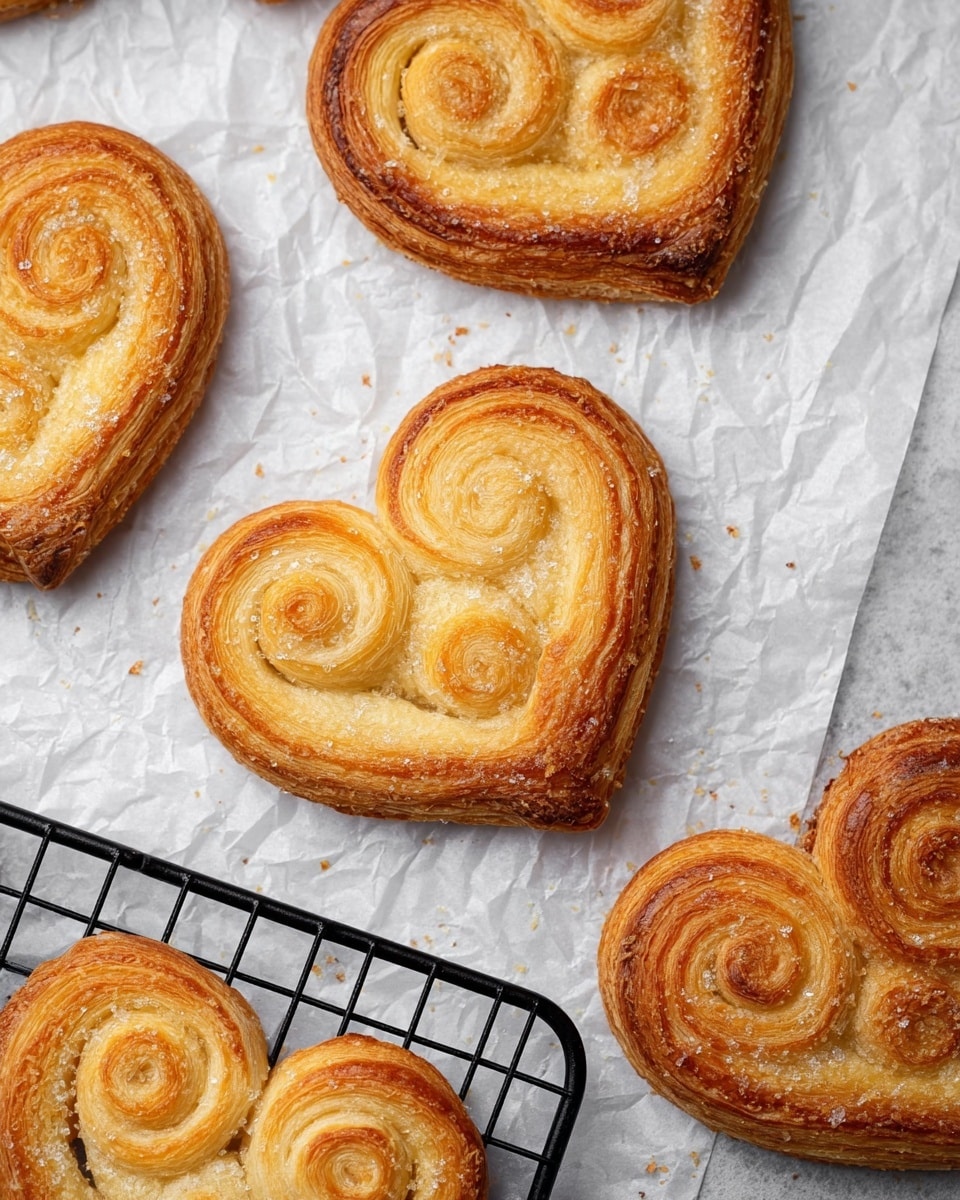
Garnishes
Palmiers are stunning on their own, but you can dress them up with a dusting of powdered sugar or a drizzle of melted chocolate for extra indulgence. Fresh berries or a swirl of whipped cream on the side make them feel extra festive.
Side Dishes
These pastries pair beautifully with a cup of strong coffee, tea, or even a glass of chilled dessert wine. For a brunch spread, serve alongside fresh fruit, yogurt, or softer pastries for contrast in textures.
Creative Ways to Present
Try stacking homemade palmiers in a rustic basket lined with a pretty napkin for a charming treat table centerpiece. You can also arrange them around a creamy cheese wheel for a playful sweet-savory platter that will dazzle guests.
Make Ahead and Storage
Storing Leftovers
If you find yourself with extra palmiers, store them in an airtight container at room temperature. They will stay crisp and delicious for up to two days, making them perfect for enjoying later.
Freezing
Though best fresh, you can freeze baked palmiers by placing them in a single layer on a baking sheet until firm, then transferring to a freezer-safe container. Thaw at room temperature when ready to eat, but note that freezing might slightly soften their crunch.
Reheating
To bring back that fresh-baked crispness, pop leftover or thawed palmiers in a preheated oven at 180°C (350°F) for about 5 minutes. Avoid microwaving as it tends to make them soggy.
FAQs
Can I make palmiers without puff pastry?
Puff pastry is essential for that signature flaky texture and buttery layers. Using other doughs won’t achieve the same light, crispy result that makes palmiers so special.
Is it necessary to chill the pastry during preparation?
Yes! Maintaining a cold temperature prevents the butter from melting into the dough prematurely, ensuring crisp, flaky layers instead of a greasy, dense texture.
Can I add flavors to the sugar?
Absolutely! Cinnamon, cocoa powder, or finely chopped nuts mixed into the sugar can create exciting variations on this classic Homemade Palmiers Recipe.
How do I prevent the sugar from burning?
Keeping the oven temperature steady and not exceeding the recommended baking time helps avoid burnt sugar. Rotating the baking tray midway ensures even caramelization.
Are palmiers gluten-free?
Traditional palmiers are made with wheat-based puff pastry and contain gluten. Look for gluten-free puff pastry options if you need to keep this recipe gluten-free.
Final Thoughts
There’s something utterly magical about creating this Homemade Palmiers Recipe from just a few simple ingredients and ending up with elegant, crispy pastries that feel so special. I promise once you try making these delightful treats yourself, you’ll be hooked on their buttery layers and caramel crunch. So go ahead, roll up your sleeves, bring out the puff pastry, and share these scrumptious palmiers with friends and family – they’ll thank you for it!
Print
Homemade Palmiers Recipe
- Total Time: 40 minutes
- Yield: 12 servings
Description
Palmiers are delicate, flaky French pastries made from puff pastry and sugar, baked to golden perfection. These sweet, crisp treats have a distinctive heart or palm leaf shape and a caramelized, sugary crust. Perfect for enjoying with a cup of tea or coffee, palmiers are a simple yet elegant dessert or snack.
Ingredients
Pastry
- 1 pack Puff pastry (thawed, approximately 250g)
Sugar
- 150 g Granulated sugar
Egg Wash
- 1 Egg
- Splash of milk
Instructions
- Thaw Puff Pastry: Thaw the puff pastry sheets if using frozen, ensuring they remain cold to maintain their texture and handleability.
- Prepare Baking Sheets: Line two baking sheets with parchment paper. There is no need to grease these as the puff pastry already contains enough fat for non-stick baking.
- Roll Puff Pastry: Unfold one sheet of puff pastry on a lightly floured surface. Using a rolling pin, gently smooth the pastry to seal any folds, being careful not to stretch it.
- Sprinkle Sugar and Fold: Spread three-quarters of the sugar evenly over the pastry sheet. Fold the top half towards the middle and then fold the bottom half up to the middle, leaving approximately a 1 inch (2 cm) gap in the center. Repeat this folding process once more on both halves, distributing sugar evenly and maintaining the gap to create the layered log.
- Cut and Arrange Pastries: Sprinkle the remaining sugar on the folded log. Using a sharp knife, slice the log into 1 cm (1/2 inch) pieces. Place these cut pieces spaced apart on the baking sheets to allow them to puff up during baking.
- Chill If Necessary: If the puff pastry becomes too warm to handle, place it in the freezer for a few minutes. Avoid forcing or over-handling the pastry when warm, as this can damage its layers.
- Apply Egg Wash: Whisk one egg with a dash of milk and lightly brush the tops of the pastries. Optionally, dust with additional sugar for extra caramelization and crunch.
- Preheat Oven and Chill Pastries: Preheat the oven to 200°C (392°F), without fan. Chill the prepared pastries in the fridge or freezer, which helps maintain their shape during baking. Keep the second tray cold while baking the first.
- Bake Palmiers: Bake at 200°C (392°F) for about 15 minutes on one side, then flip them and bake for another 10 minutes or until the tops are golden brown and the bottoms are evenly baked. Repeat with the second tray of pastries.
- Cool and Serve: Let the palmiers cool slightly on the baking sheet for 5 minutes, then transfer them to a cooling rack to cool completely. Serve fresh for the best texture and flavor.
- Storage: Store any leftovers at room temperature in an airtight container for up to 2 days to maintain crispness.
Notes
- Keep the puff pastry cold while working with it to prevent the butter layers from melting, which ensures a flaky texture.
- Use a sharp knife for clean cuts to maintain the shape of each palmier.
- Chilling the folded pastry before baking helps the palmiers hold their shape and results in better puffing.
- Do not overcrowd the baking sheet; allow plenty of space between the palmiers for even baking and expansion.
- If you want extra sweetness and crunch, sprinkle sugar over the egg wash before baking.
- Prep Time: 10 minutes
- Cook Time: 25 minutes
- Category: Dessert
- Method: Baking
- Cuisine: French

